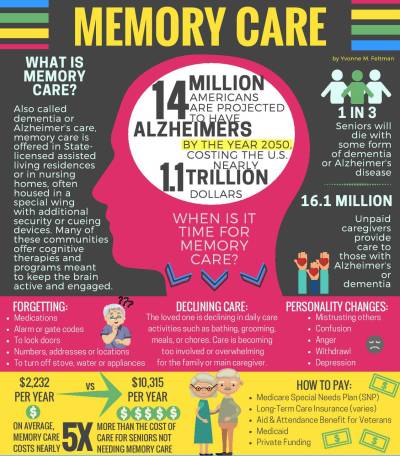All About Memory Care Providers: Why Little Memory Treatment Houses Are an Excellent Option
Memory care solutions play a vital function in supporting people with Alzheimer's and mental deterioration. Tiny memory care homes stand apart for their personalized strategy and intimate setting. With lower staff-to-resident proportions, these homes promote more powerful connections and customized treatment. Homeowners profit from enhanced social communications and a safe setting. As families explore options, understanding the distinct advantages of small memory treatment homes comes to be important. What factors should be considered when picking the best home?
Understanding Memory Treatment Solutions
While many might recognize with general elderly care options, comprehending memory treatment services is essential for households encountering the difficulties of cognitive decline. Memory care particularly accommodates people with problems such as Alzheimer's disease and other forms of mental deterioration. These services supply a structured atmosphere that concentrates on improving the lifestyle for locals via specialized care and support.Memory care facilities are designed to assure safety and security and safety, commonly including safeguarded atmospheres to prevent wandering. Educated team members are offered all the time to assist with everyday tasks, drug management, and personal care. Furthermore, memory treatment programs usually consist of cognitive excitement tasks, customized to engage locals and promote mental well-being. Households can benefit from understanding these services, as they make it possible for informed decisions regarding their loved ones' care, guaranteeing that their details requirements and choices are attended to in a compassionate and encouraging fashion.
The Benefits of Small Memory Care Houses
Little memory treatment homes use distinctive benefits that can greatly enhance the lifestyle for locals with cognitive disabilities. One significant advantage is the intimate atmosphere, which enables personalized interactions amongst personnel and residents. This smaller setting fosters meaningful connections, reducing sensations of isolation and stress and anxiety commonly experienced by individuals with memory issues.Additionally, the lower staff-to-resident ratio in little memory care homes makes it possible for caretakers to offer more attentive guidance and support. This strategy not just boosts security but additionally advertises a sense of safety and security for the residents.Moreover, little memory care homes can adapt quickly to the one-of-a-kind requirements and preferences of each homeowner, enabling for a more homey atmosphere. Such an environment can urge social engagement and engagement in tasks, eventually enriching the daily experiences of those coping with cognitive disabilities.
Personalized Care Plans for Residents
Personalized care strategies are vital in memory treatment homes, as they cater to the unique needs and choices of each citizen. These plans begin with extensive assessments conducted by competent specialists, who assess cognitive abilities, clinical history, and personal rate of interests. This tailored strategy assurances that care is not just effective however also considerate of each person's dignity and autonomy.Moreover, personalized care strategies are versatile, permitting adjustments as locals' needs advance over time. This versatility promotes a complacency and familiarity, which is essential for individuals dealing with memory obstacles. Caregivers are trained to execute these plans continually, offering assistance that lines up with the citizens' regimens and preferences.Ultimately, individualized care plans enhance the lifestyle for locals by promoting involvement, freedom, and wellness, making them an essential aspect of memory care solutions in small memory care homes.
Producing a Home-Like Environment
Producing a home-like atmosphere is critical for cultivating comfort and knowledge in memory care setups, as it considerably affects residents' psychological well-being. Tiny memory care homes often focus on tailored touches, such as cozy color schemes, household photos, and acquainted furnishings plans, which aid citizens really feel much more at simplicity. Including aspects similar to a traditional home, like cozy home and common locations, encourages a sense of belonging.Moreover, using natural light and outdoor rooms can enhance the environment, advertising relaxation and harmony. Team members play a significant role in maintaining this setting by engaging with locals in a thoughtful manner, treating them like family members. Routine activities, such as food preparation or gardening, can also contribute to a home-like feel, using opportunities for locals to join meaningful experiences. Generally, creating a nurturing environment sustains cognitive function and emotional security, making it a necessary facet of memory care services.
Boosted Social Communication and Community
Enhanced social communication and neighborhood are important elements of memory treatment services. By fostering personalized social engagement and developing a family-like atmosphere, these services promote significant links amongst citizens. Team occasions and activities additionally encourage involvement, aiding people really feel extra consisted of and supported.
Individualized Social Engagement
While social interaction is vital for total health, many individuals with memory impairments frequently struggle to engage meaningfully with others. Personalized social interaction in memory treatment homes addresses this challenge by producing customized activities that deal with residents' special interests and abilities. By concentrating on private choices, caretakers can cultivate connections that resonate deeply with each person. Activities such as art therapy, music sessions, and guided discussions promote cognitive stimulation and psychological expression. Furthermore, index tiny group setups encourage sociability and enable even more intimate interactions, improving feelings of belonging. This technique not just deals with feelings of seclusion yet also empowers residents to keep a sense of identification, eventually adding to enhanced mental health and wellness and lifestyle.
Family-like Environment
In a memory care setting, cultivating a family-like ambience greatly boosts social communication and builds a feeling of neighborhood amongst citizens. Smaller sized memory care homes commonly focus on intimate environments, enabling residents to form closer links with one another and personnel. This nurturing environment advertises count on, which is essential for people with memory impairments. Locals are most likely to involve in conversations and share experiences, producing a supportive network that eases great post to read feelings of loneliness. The familiarity of shared areas and routines contributes to a sense of belonging, additionally urging social communication (personalized memory care). In such settings, psychological bonds thrive, causing improved overall wellness and a greater top quality of life for homeowners as they navigate their everyday experiences with each other
Team Activities and Occasions

Safety and Security Features in Tiny Homes
Numerous tiny homes developed for memory care incorporate necessary safety and security and security attributes to ensure the well-being of locals. These homes typically utilize safe and secure entrance and exit points to avoid straying, a typical problem among people with memory disabilities. Additionally, security systems and alarm systems enhance monitoring, guaranteeing that personnel can quickly respond to any type of uncommon activities.Interior formats are tailored for security, with lessened hazards such as sharp edges and clutter-free paths. Handrails and non-slip flooring are commonly set up to lower the threat of falls. Team member are learnt emergency situation protocols, guaranteeing they are planned for various situations.Moreover, customized treatment plans might include assessment of specific safety needs, providing tailored solutions for each and every local. Overall, these safety and security and protection features produce a nurturing atmosphere where residents can flourish while maintaining their self-respect and independence.
Just how to Choose the Right Memory Treatment Home
How can families ensure they select one of the most appropriate memory treatment home for their loved ones? The choice needs cautious factor to consider of several aspects. Initially, families ought to examine the facility's team qualifications and training, making sure that caretakers are experienced in managing memory-related conditions. Next off, it's essential to examine the home's atmosphere, concentrating on safety features and whether it promotes a feeling of area and belonging. Visiting the center can give understanding right into day-to-day tasks and the social ambience, which are vital for mental excitement and psychological wellness. Furthermore, households need to inquire concerning the care plans supplied, guaranteeing they are customized to specific requirements. Considering the home's location and availability for household check outs can contribute to a smoother change. By dealing special info with these aspects, family members can make an informed decision that prioritizes their enjoyed one's convenience and top quality of life in a memory treatment setting.
Frequently Asked Questions
What Qualifications Should Staff Members in Memory Treatment Residences Have?
Team members in memory treatment homes need to have appropriate accreditations, experience in dementia care, strong communication abilities, and concern. Recurring training in behavioral monitoring and healing interventions improves their capacity to support residents properly.
How Do Memory Treatment Provider Differ From Standard Assisted Living?
Memory treatment solutions focus especially on individuals with memory impairments, offering customized support and structured atmospheres. On the other hand, traditional assisted living provides basic help with daily tasks, lacking the tailored technique essential for those with cognitive challenges.
What Kinds of Activities Are Provided in Memory Treatment Residences?
Memory care homes commonly provide a range of tasks developed to engage citizens. Usual options include art therapy, songs sessions, cognitive video games, workouts, gardening, and gatherings, all targeted at enhancing wellness and cognitive function.
Can Citizens Bring Their Own Valuables to Memory Care Homes?
Homeowners can typically bring their own items to memory care homes, enabling them to individualize their home - personalized memory care. This method aids create a familiar atmosphere, promoting comfort and a sense of identification for the people

How Are Family Members Members Associated With the Care Process?
Family members play a vital function in the treatment procedure, frequently taking part in decision-making, participating in care conferences, and providing emotional support. Their participation fosters a collaborative environment, boosting the homeowner's overall health and lifestyle. While many may be acquainted with general senior care options, comprehending memory treatment solutions is vital for family members encountering the challenges of cognitive decline. These solutions supply a structured environment that concentrates on boosting the top quality of life for citizens with specialized care and support.Memory care facilities are designed to guarantee safety and security and protection, usually featuring safeguarded environments to prevent wandering. Personalized care plans are vital in memory care homes, as they cater to the one-of-a-kind needs and choices of each citizen. Personnel members in memory care homes ought to possess relevant accreditations, experience in dementia care, solid interaction abilities, and empathy. Memory care services focus specifically on people with memory problems, providing specialized support and organized settings.